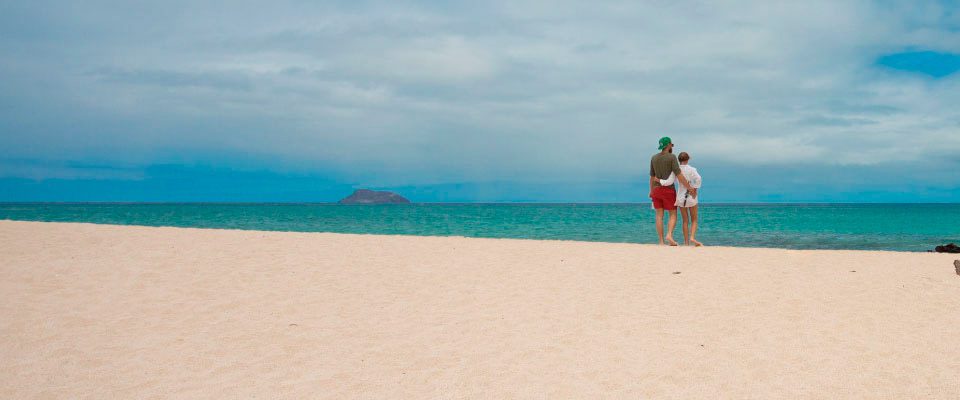
Ok. I know. It sounds crazy. Afraid to snorkel? I mean, how can you even think of going to the Galapagos Islands and not putting on a mask and flippers? At least, that’s what my teenage son said to me. Somehow, though, teenagers don’t know from fear. That’s their greatest strength and their greatest danger.
But back to the Enchanted Isles…
TALK TO A DESTINATION EXPERT

Diego Zapata

Rosa Mena

Sandy Lara

Diego Zapata

Rosa Mena

Sandy Lara
And how I lost my fear of snorkeling in Galapagos…
So, to set the record straight, I grew up in New York. City, state, city, state. And yes, Manhattan is surrounded by water. But my family’s idea of a hike was walking slowly up and down 5th Avenue in our holiday finery looking at the shop windows after a Broadway show. We weren’t exactly outdoors types.
Over time, and after living for years in Ecuador, I have come to appreciate the joys of getting out into nature: climbing a hill just for the view, breathing in the scent of cool mountain air, or marvelling at the wonders hidden in the cloud forest right on the outskirts of Quito, my home city, for most of my adult life.
A land-based creature
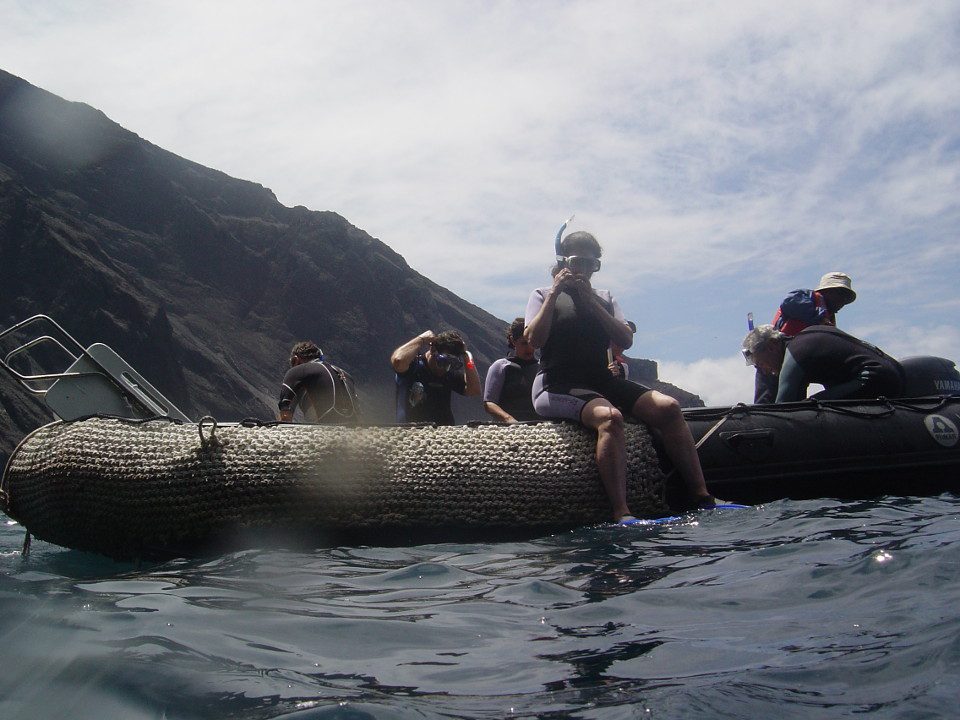
But we’re not talking land here. We’re talking water. Lots of water. Crystal clear Pacific Ocean water, a sanctuary for numerous species. And let’s not even talk about all of the colors of the water. Turquoise. Teal. Cerulean. Deep blue. All depending on the light and the weather and how close we come to one of those famous islands that inspired Charles Darwin. I couldn’t get enough of the view. But, snorkeling?
The guides aboard Yacht La Pinta all encouraged me to try it out. And seriously, I was tempted. After all, Galapagos is one of the world’s top snorkeling and SCUBA sites, a place where fanatic underwater fans flock to see the amazing wildlife. Imagine how embarrassing it was to admit that I had a serious problem with the actual implementation of the sport: claustrophobia.
The truth is, I hadn’t tried snorkeling in decades. But I vividly recalled the sensation I had the last time I put on a mask. Suffocation. Sheer lack of oxygen. Panic.
Glass-bottom boat to the rescue!
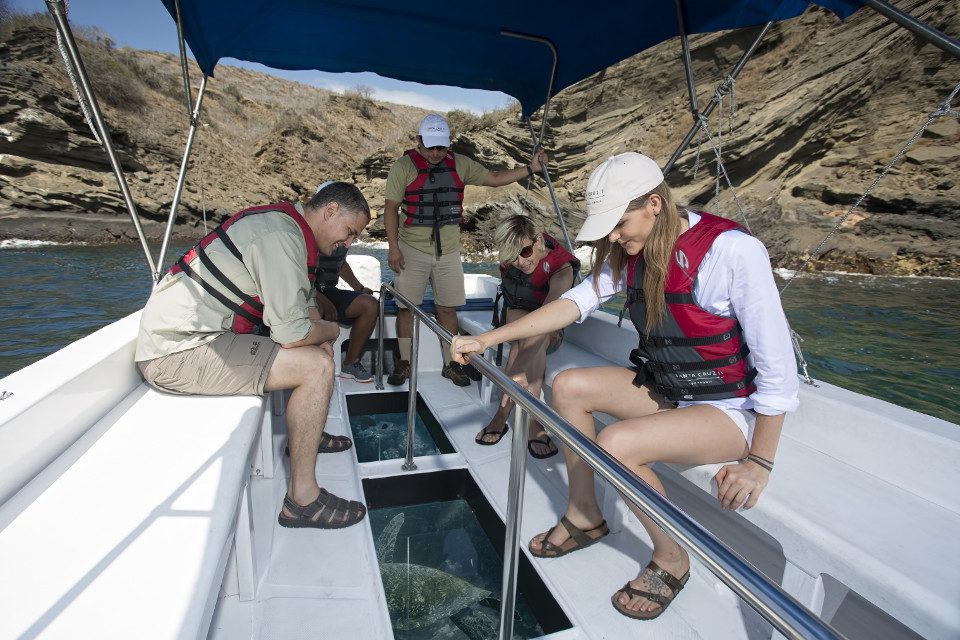
So right now, some of you – like my teenage son – are probably thinking, “what a whimp!” And maybe I was. Because I asked my guides to send me out on the ship’s glass-bottom boat. I figured that way I’d get to see the incredible creatures without having to put on the dreaded mask.
I was surprised to see that many of the other guests had chosen this option as well. Some of them preferred not to get wet. Others just wanted to share this special adventure with numerous generations of their family, not all of whom were up to swimming, even in these calm waters. All of us loved the experience. The guide gave each of us a card that would help us identify all of the multi-coloured species we were seeing through the glass, such as: black-striped salema, guinea fowl pufferfish, king angel fish, leather bass and yellow tail surgeon fish.
But the water called out to me…
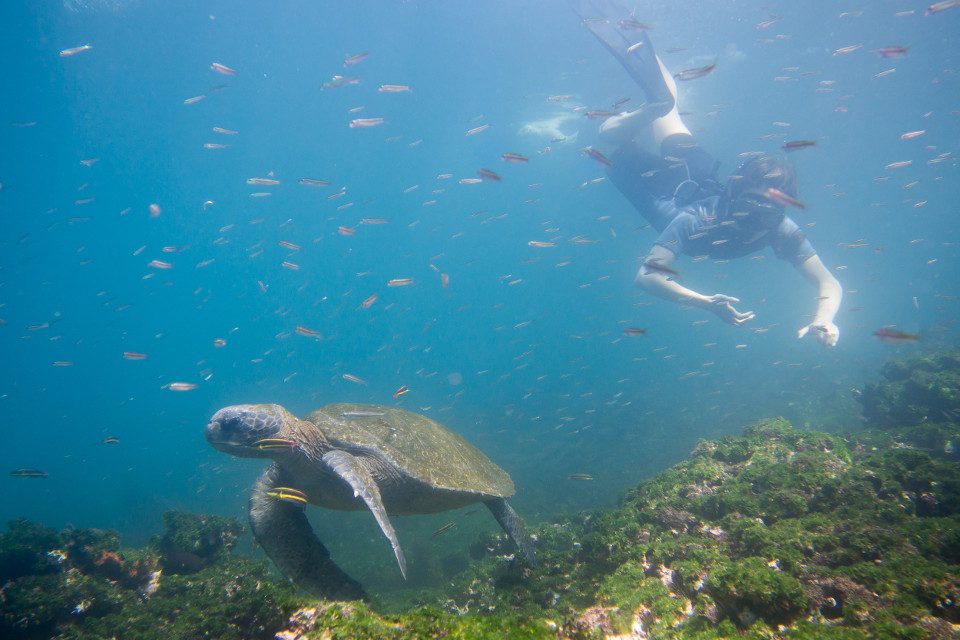
“That’s it!” I said to myself. “Time to lose your fear.” I mean, really, it’s one of the top snorkeling sites in the world. So, I put on my short wetsuit and my flippers. My expert guide showed me the basics of using the mask and snorkel and, of course, gave me important safety tips. And off I went!
I followed my group along the rocky coastline and a huge underwater world opened up to me. I felt as if I had been transported to another planet, with infinite sandy beaches and crevices that served as perfect hideouts for often prickly invertebrates or slippery eels. I saw lobsters so large they looked like they had taken steroids. Schools of fish darted past me, startling me as they danced in and out of the light and shadow.
In some places, I felt the rush of adrenaline as small sharks stealthily explored the ocean floor just metres away, often accompanied by sting rays whose broad flaps floated through the current like a futuristic spaceship coasting through outer space.
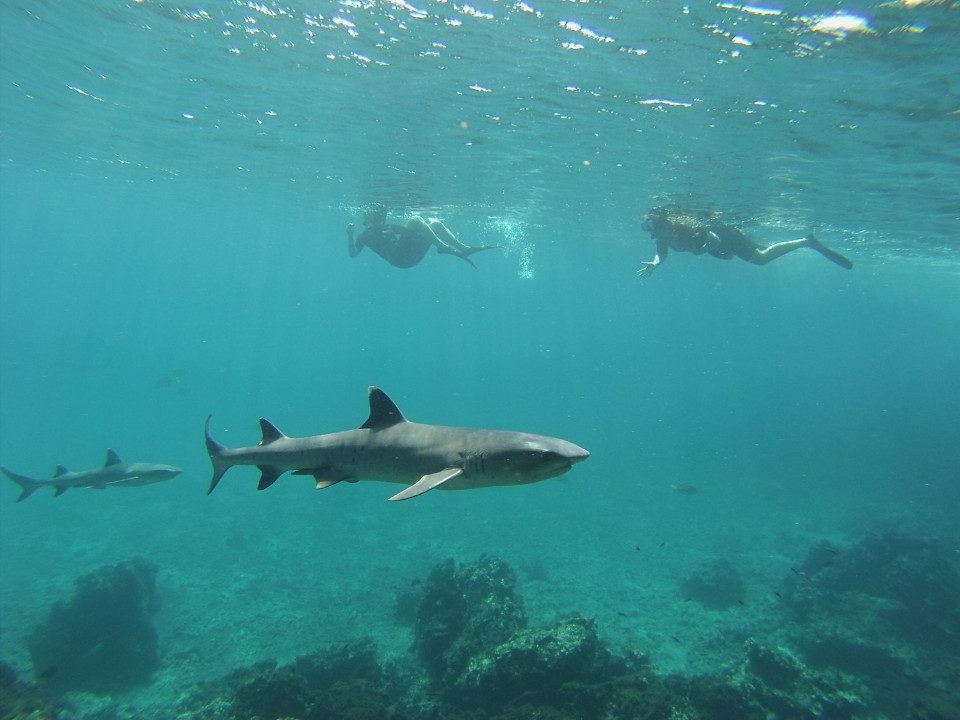
And that’s all nothing compared to the moment when a playful sea lion pup decided to get literally in my face, checking out the strange creature with the black face gear who moved so relatively slow in the water (that would be me, of course!) before darting off to play with the waves.
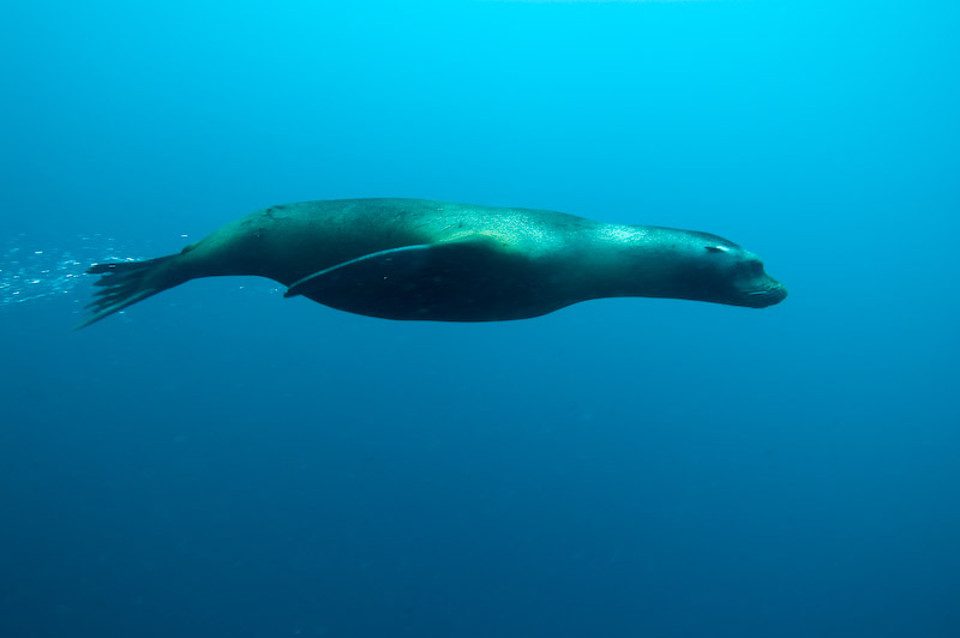
The sounds of silence… and joy!
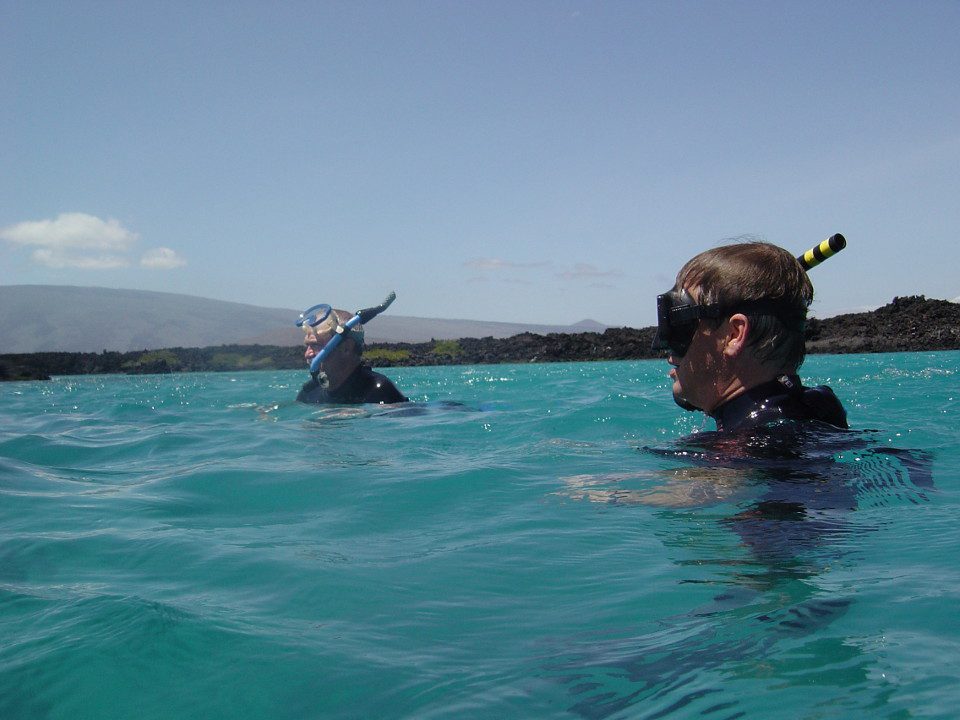
I guess in some ways I had expected this to be a great show of nature’s best, and I certainly wasn’t disappointed. What I didn’t expect, and which quite honestly astounded me, was the incredible peace I ended up finding in the water through snorkeling in Galapagos. I’ve spent time in the ocean throughout my life, ridden the waves, felt the sand under my toes. But somehow those were always boisterous experiences.
Snorkeling in Galapagos felt pretty close to nirvana. The warm sun on my back, a muted silence in my ears, interrupted only by shouts of excitement at the discovery of a particularly beautiful specimen of fish or the spotting of animals that would normally be predators. But here, we are all just one more piece of a complex ecosystem that accepts humans without fear, allowing us a first-hand view of the best underwater theatre available on our planet.
Snorkeling in Galapagos truly is an experience of a lifetime!
Want to learn more about the scientific side of snorkeling in Galapagos? Continue on below to get filled in by our Galapagos Expert!
What to Expect as we Enter the Hot Season
Discover the Fish of the Galapagos
Potential travelers to the Galapagos Islands are exposed to all kinds of media when it comes to island wildlife. Magazines, natural history programs, museums, documentaries, and social media all help to fuel our excitement when it comes to visiting Galapagos. And this is great because it creates a visual “sneak peek” directly into the hands of the explorer-to-be. However, when guests finally get to explore the islands, most are actually pleasantly surprised by all the life they find underwater that was barely even mentioned in everything they glimpsed before coming. The marine world truly is just as stunning as the terrestrial world of this unique tropical archipelago, and more so at this time of the year when the waters are gradually warming up. From January to March, explorers should expect water temperatures to range anywhere from 76 – 82 °F (24 – 28 °C).
Closer
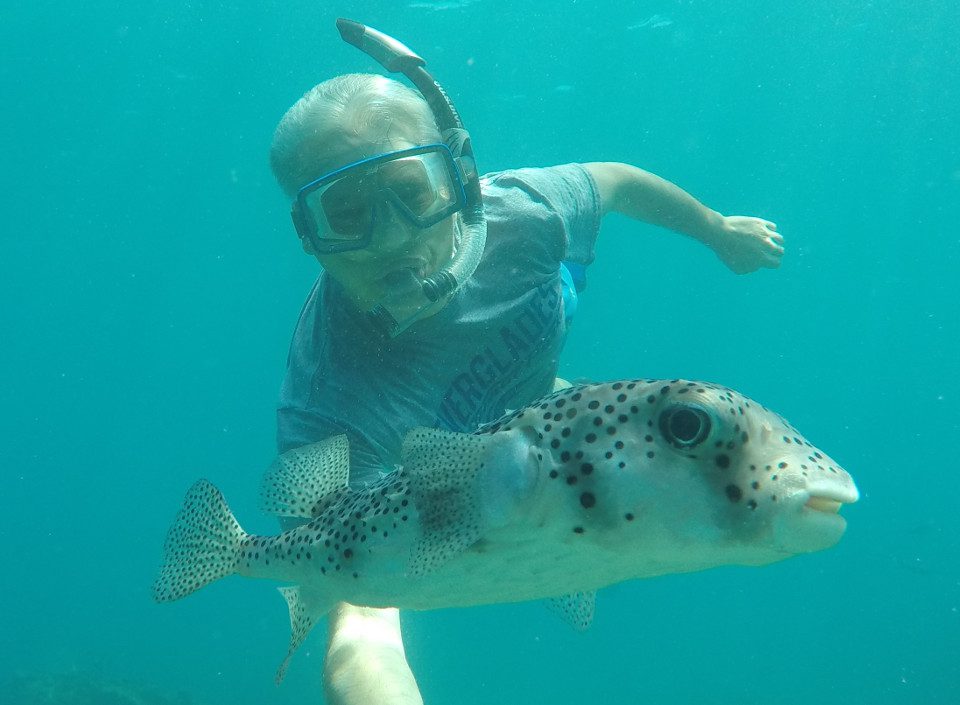
The Natural History of the Galapagos Marine Realm
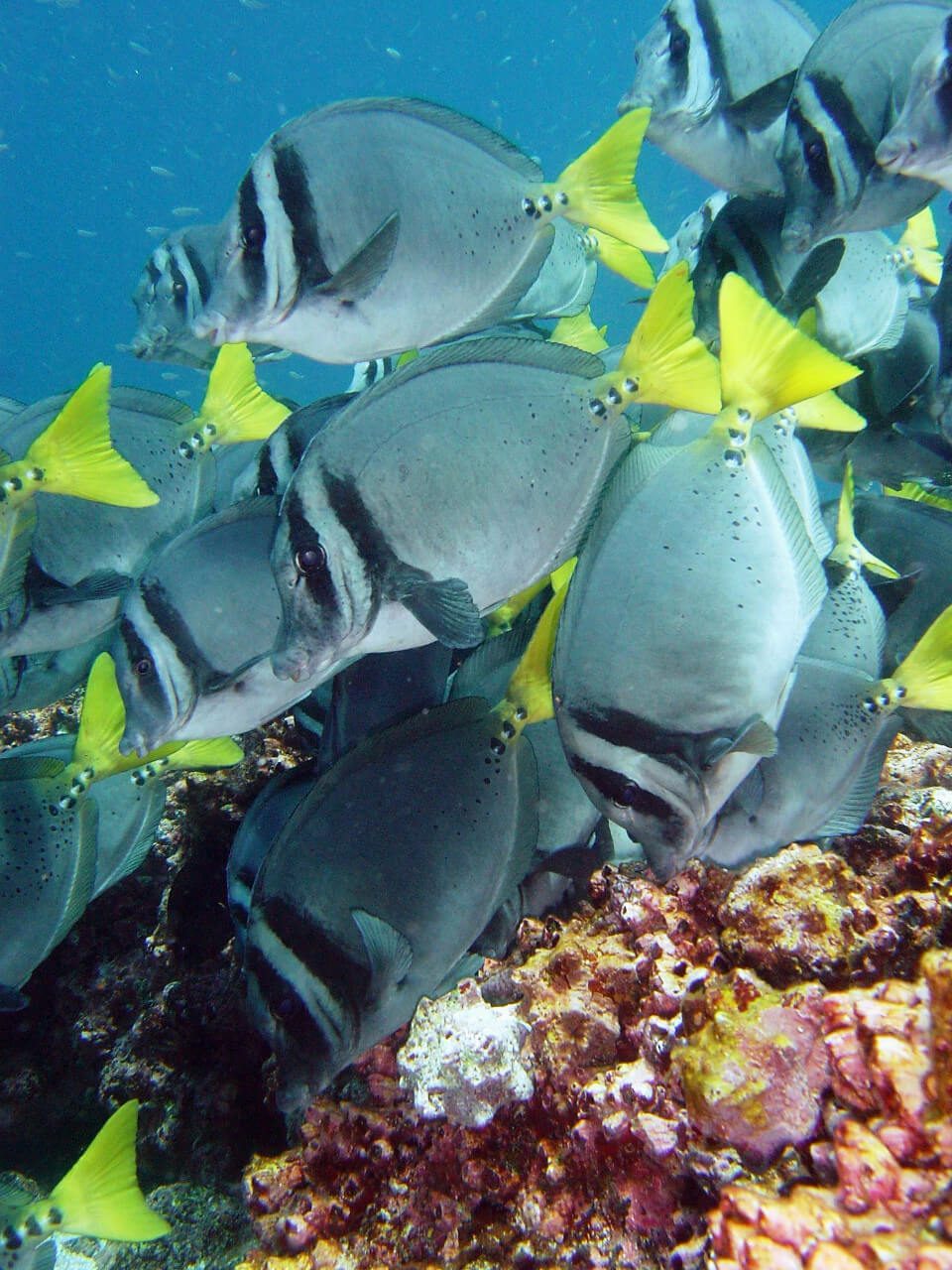
When Charles Darwin visited the islands in 1835, he wrote the first natural history of Galapagos fishes. According to the book “Zoology of the HMS Voyage of the Beagle,” Darwin collected a total of 15 species that were later described by Leonard Jenyns in 1842. Although many other small-scale ichthyo-expeditions (ichthyo meaning: related to fish) came to the archipelago, nothing topped the early yet monumental work done by the California Academy of Sciences during their 1905-1906 expedition. Later on, in 1923, the famous William Beebe would take the Galapagos underwater world to the next level by devising new ways of examining the fascinating marine life. After that, several important expeditions took place in the mid- and late-1900’s, but it wasn’t until 1986 – thanks to the deeper understanding of the place and the recognition of its value – that the Galapagos finally got its waters “upgraded” to the title of Marine Reserve. In 2001, UNESCO recognized the need for international awareness and the protection of the Reserve and included the protected marine area in its list of Natural World Heritage Sites.
Ecuador proudly manages the marine area of the Galapagos which now covers a total area of 133,000 km2 (51,000 mi2). Without a doubt, the waters of the islands support a very large number of terrestrial processes, too, and a balance in this relationship is crucial!
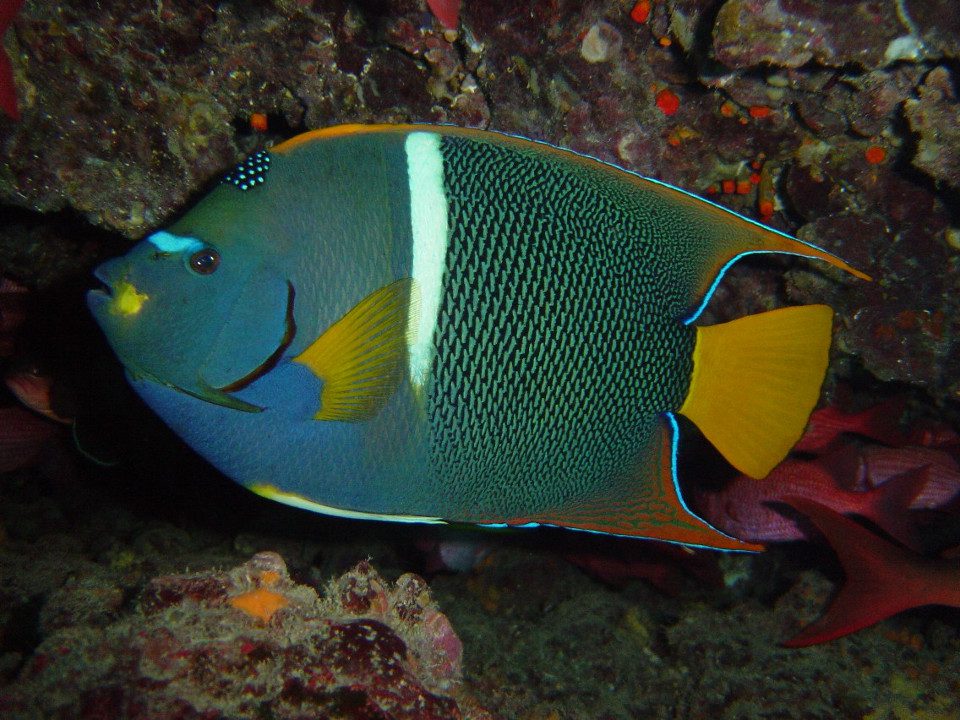
Because the islands’ marine world is so relevant, a true and complete Galapagos expedition should always aim to include at least one of the following activities: snorkeling, scuba diving, panga (dinghy) coastal explorations, kayaking, and even glass-bottom boat outings (Fun Fact: All of our vessels offer these Galapagos activities for except SUBA diving). All of our itineraries stop at highly-rewarding snorkeling sites – all different from each other – where awesome underwater experiences await!
Enjoy Your Fish!
Although this sounds like a gastronomic invitation, what we mean is that once you put your mask on and jump in, you will develop a unique appreciation for the many species of fish that you see roaming about and living inside Galapagos waters. During the first months of the year, when Galapagos waters warm up and become duly tropical, snorkeling often becomes one of the biggest highlights of Galapagos excursions. What’s unique about the Galapagos is the bizarre combination of tropical fish living right next to cold-water species such as sea lions, jacks, angel fish, penguins, and more.
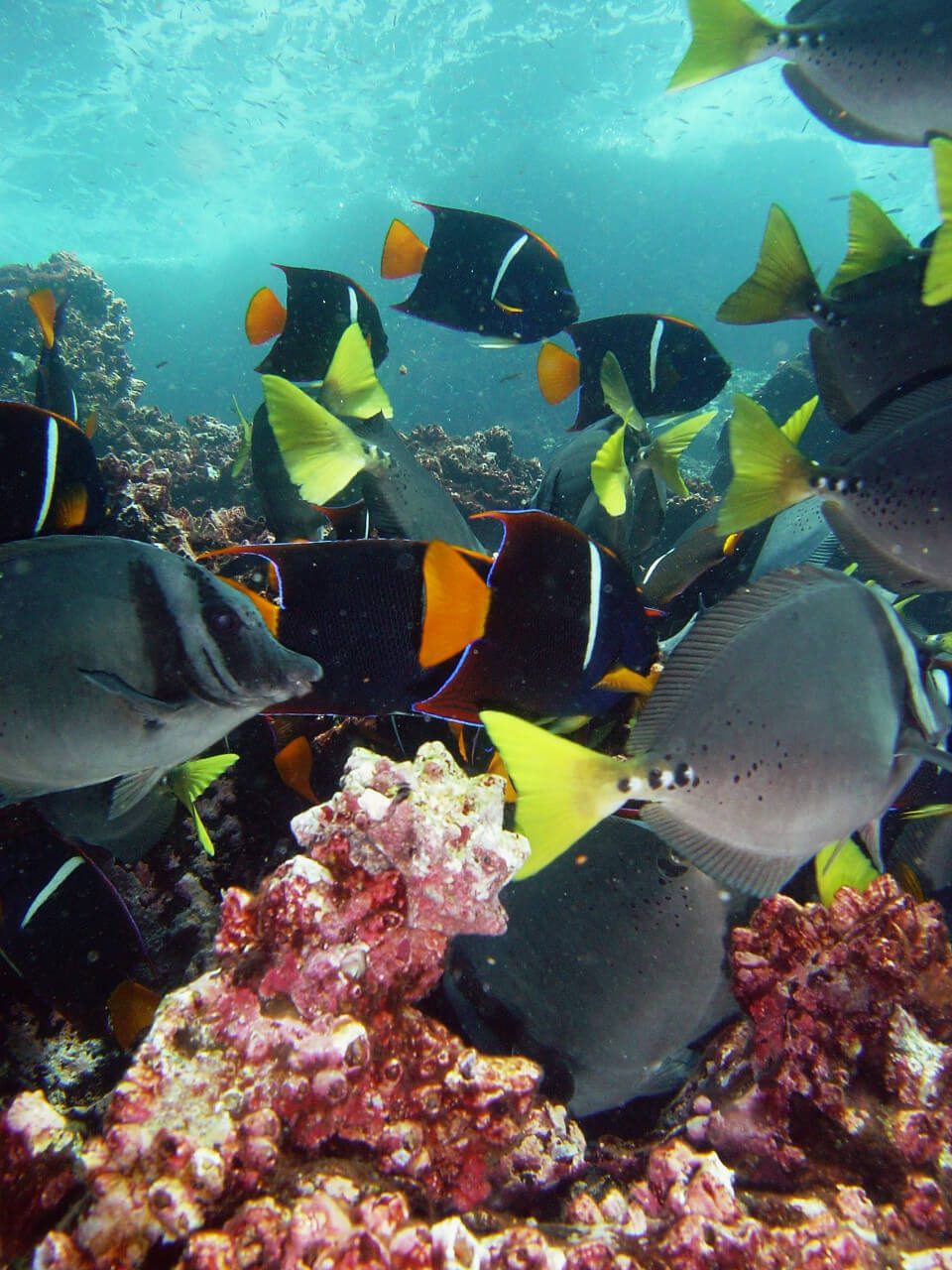
Ocean currents that originate from different cardinal points and the different biological conditions that they bring in provide us with a total of 2,900 species and an endemism level of 25%. The more than 500 species of fish in the islands (not counting the deep-sea benthic species) is an invitation for snorkellers, divers, and ocean-lovers alike to jump in and look at the islands from a wholly different perspective! Having said that, hop in the water and enjoy your Galapagos fish!
Text & Photography: by Francisco “Pancho” Dousdebés – Galapagos Expert
Other Image Credits: NOAA
Rabida Island – GALAPAGOS, January 8th, 2018 :: Lat & Long: 0°39’74” S / 90°71’02” W
FAQ’s about snorkeling in Galapagos with Metropolitan Touring
There are many questions about partaking in water activities in the Galapagos. If you are coming to Galapagos, you might be interested in checking out some of our Galapagos FAQ page. Below you will find our FAQ’s pertaining to snorkeling in Galapagos (be sure to check out our handy Galapagos Islands Snorkeling Guide too!), for beginner and experienced snorkelers alike!

Javier Garcia

Eduardo Silva

Carolina Escobar
START PLANNING YOUR TRIP

Javier Garcia

Eduardo Silva

Carolina Escobar
Get in touch for more
CONTACT US
- Do guests get any pre-snorkel information and safety advice?
- A nightly briefing, during which our Naturalist Guides or Expedition Leaders go through the activities of the next day, is given aboard all our expedition vessels. The places we’ll visit and the flora and fauna we should expect to see are identified during said briefings. Additionally, a video presentation that goes over all the aquatic-safety procedures and the proper usage of the equipment is presented. This way, we make sure that everyone will enjoy the activity to the fullest. If someone in the group doesn’t feel like snorkeling, fret not! There is something for everyone, especially on a multi-guided expedition vessel!
- What gear do you offer?
- All snorkeling gear is included (mask, snorkel, snorkeling vest, fins and mesh bag) and wetsuits are available on board (please inquire for specific details). During the hot season, when you jump into the water, it will feel nice for the first 20-30 minutes. However, because the underwater world of Galapagos is so breathtaking, we guarantee that you’ll want to stay in the water longer and therefore recommend using a wetsuit!
- Do guides get in the water?
- While snorkeling, some guides do go in the water with our guests while some stay on the boats. The ones that get in the water act as interpreters and spotters for our guests, pointing out interesting species to look for and helping out when someone needs an extra “fin.” Guides that stay on the dinghies watch over the guests and make sure no one strays too far away from the rest of the group.
- What’s the water like? Temperature? Currents? Scary to swim in? How safe?
- While water temperature varies throughout the year, the Galapagos shouldn’t be seen as the ultimate tropical destination. During the hot season (Dec-May), expect average temperatures of around 78 °F (26 °C). During the dry season (Jun-Nov), keep in mind that water temperatures will drop to an average of 70 °F (21 °C).
- There are two ways of snorkeling in Galapagos: off the dinghies and off the beach. Snorkeling from the dinghy implies that the site has no beach access, and thus you jump directly into the water; doing it off the beach, on the other hand, allows you to go at your own pace. Also, snorkeling from the boat means you will face some currents, while beaches experience almost no current.
- The only thing you really need to be scared of is just how close the underwater life will get to you! Rest assured they will never harm you, but always remember to keep a reasonable and respectful distance from them. Overall, the Galapagos Islands are a safe place to snorkel. Be sure to keep at least one eye and ear on your guides’ instructions when you’re in the water!
- What awaits guests upon their return from the snorkeling excursions?
- You will fall in love with snorkeling on our Galapagos cruises. Guests can look forward to a delicious snack and beverage when they get back to their expedition vessel. Feel free to take a dip in the hot tub before getting ready for lunch or dinner!
Now that you know all of the above, leave your fears behind and experience it for yourself on any of our Galapagos tours!


